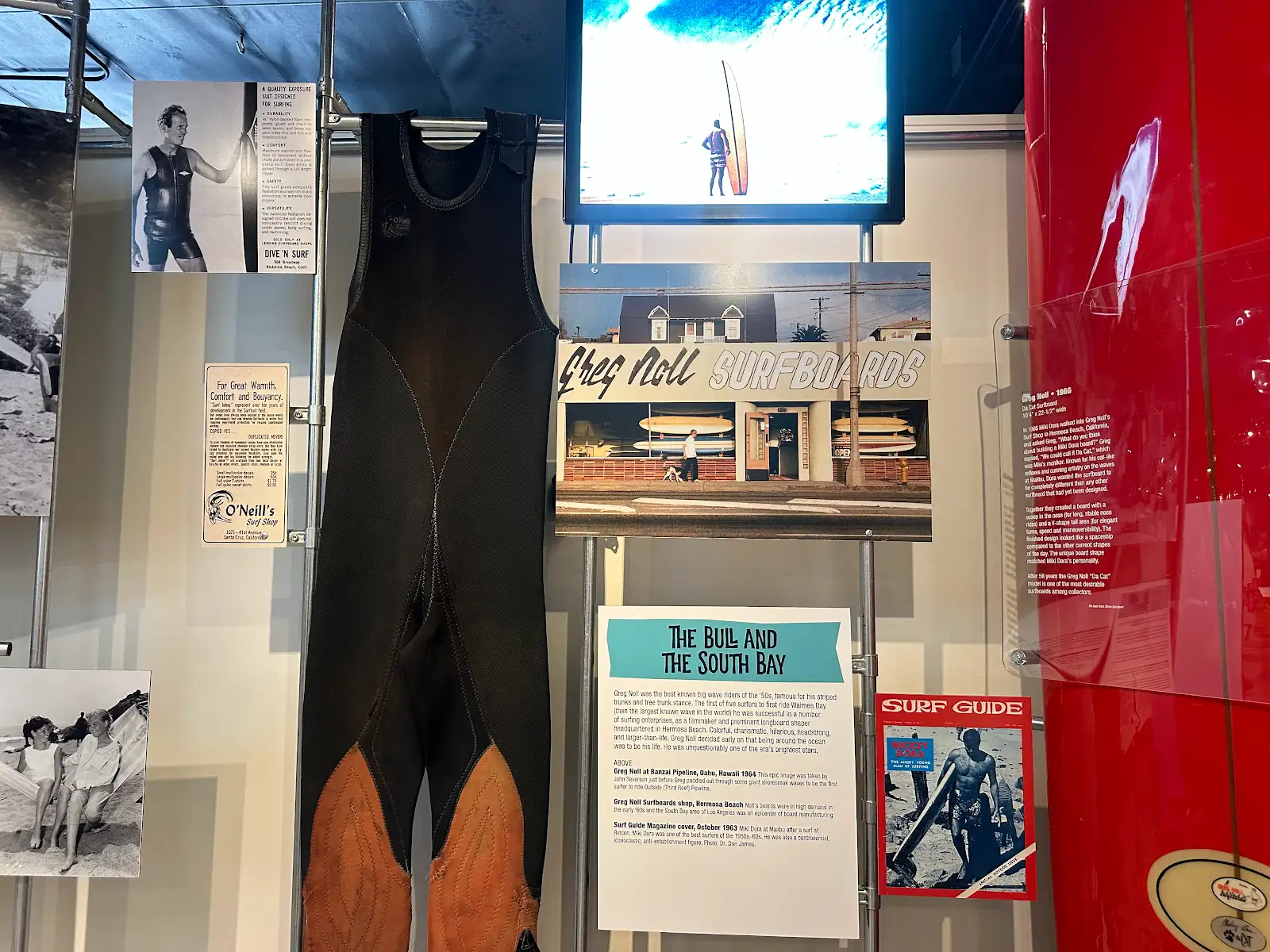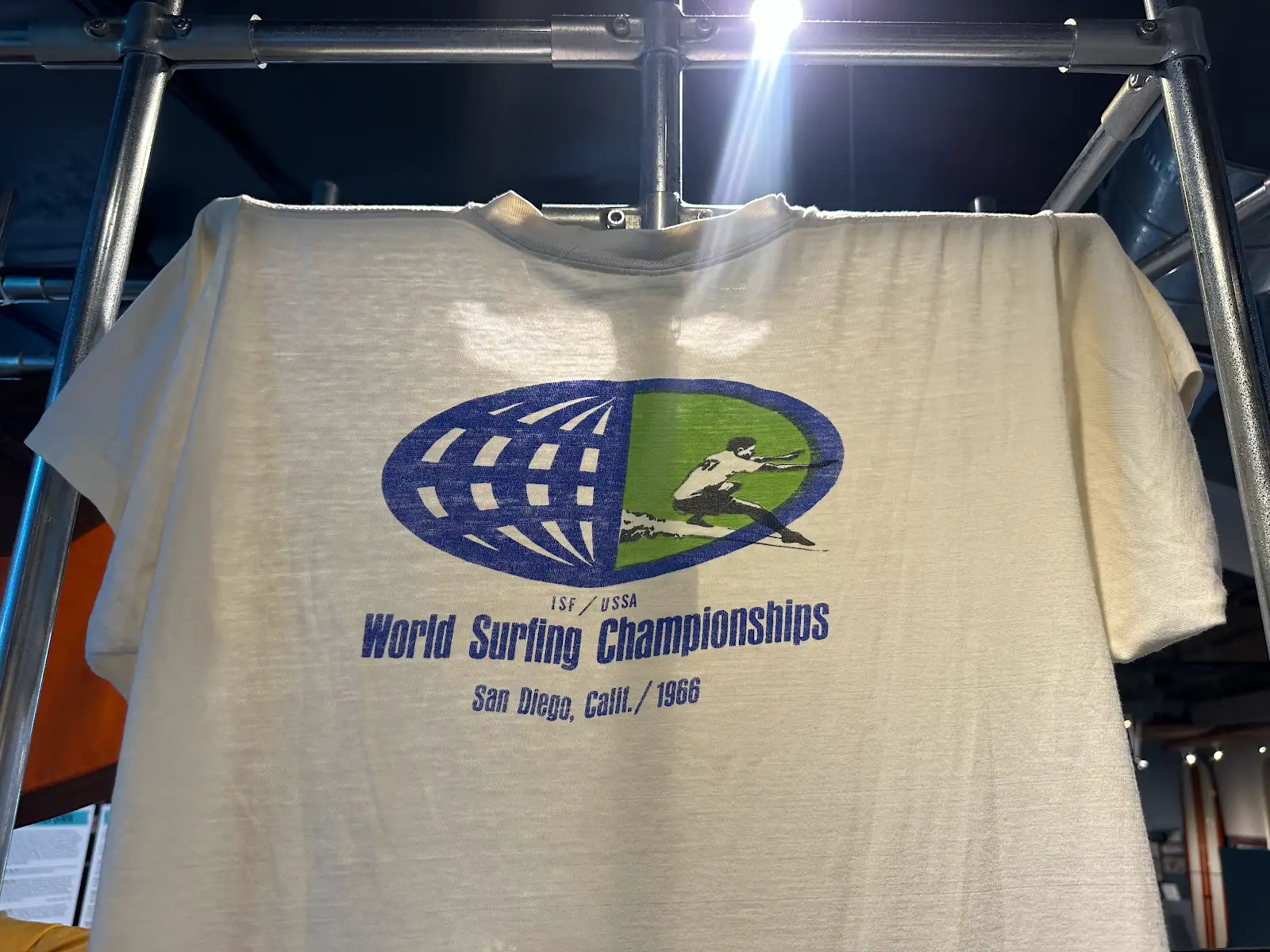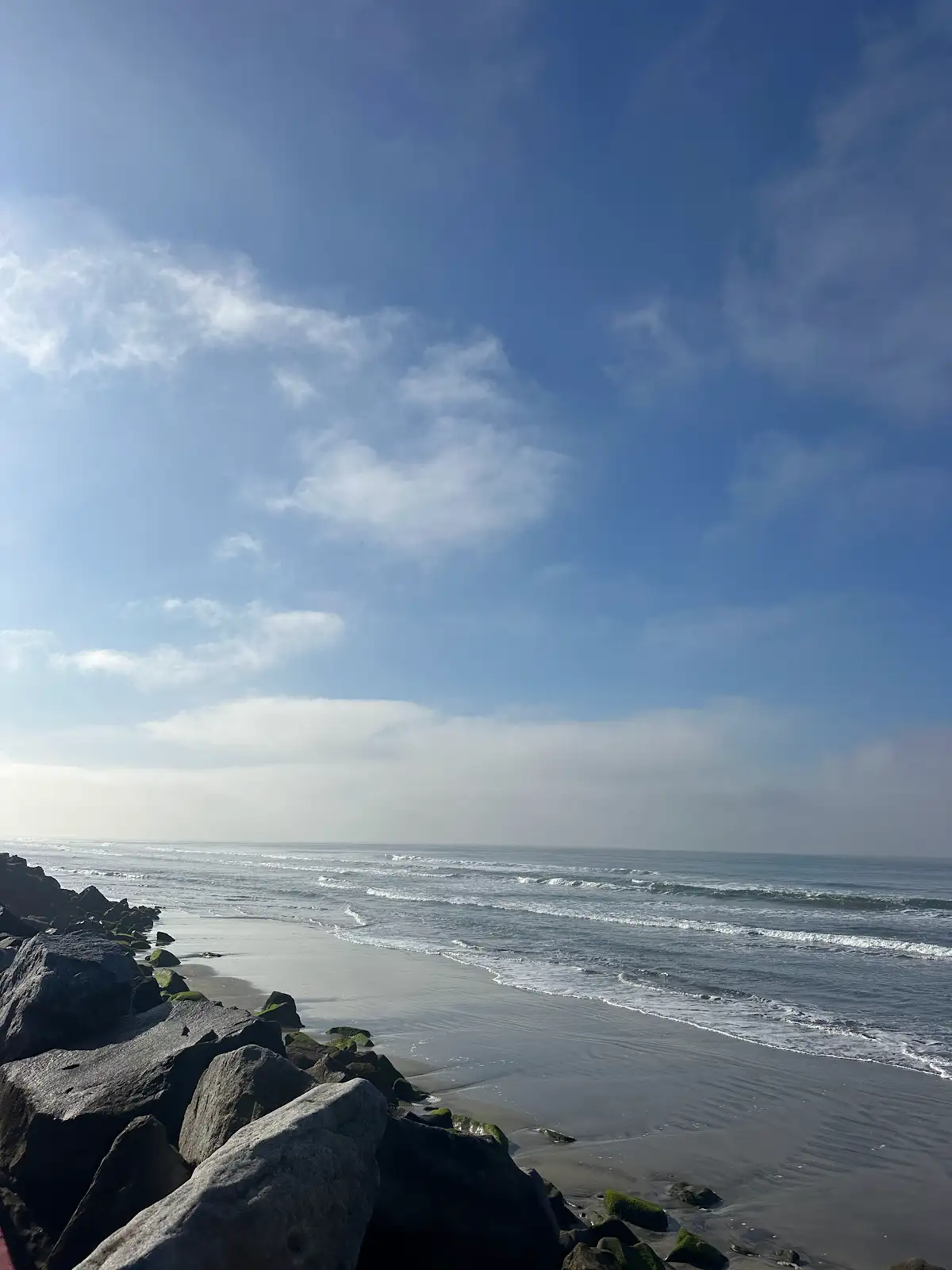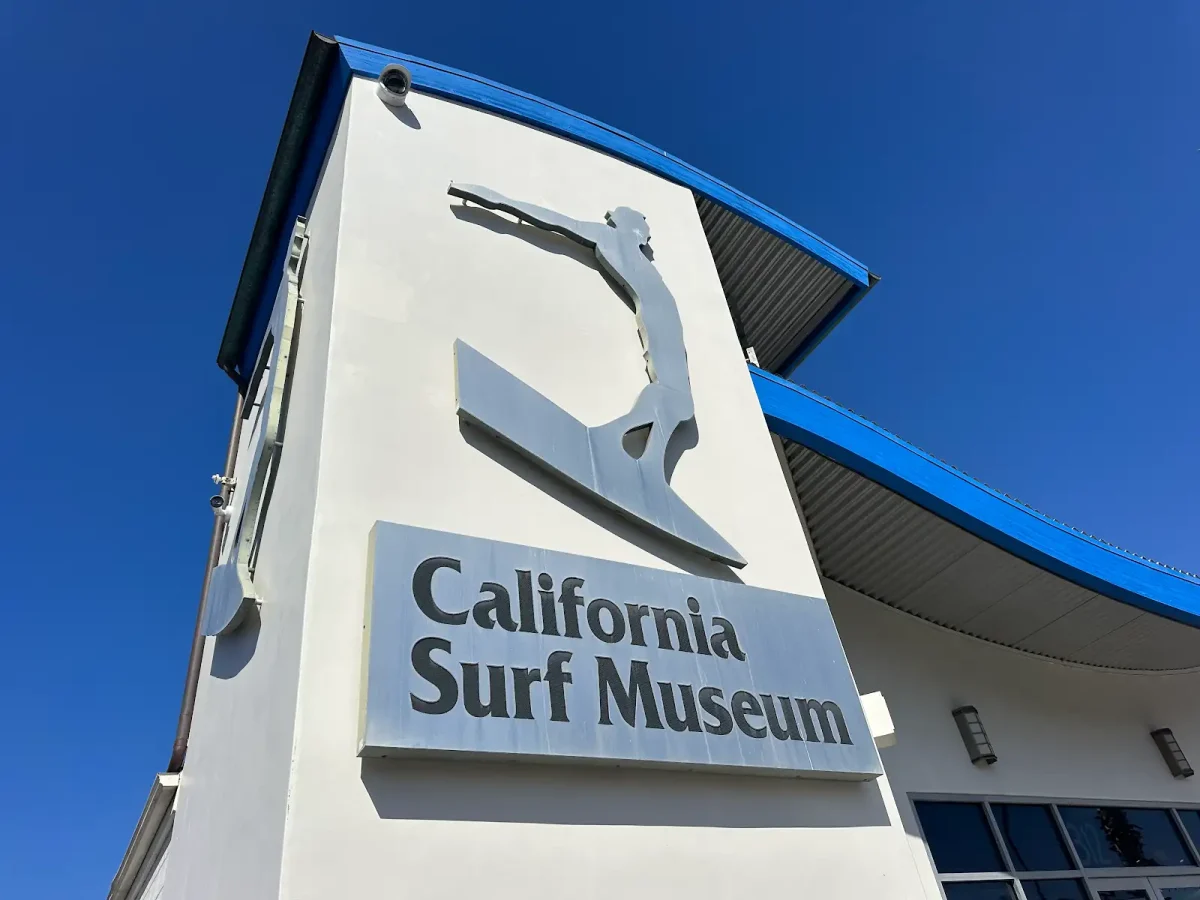Two men are hard at work painting the ocean on the walls as I walk through the double doors of the California Surf Museum. It is a sunny Friday morning in Oceanside, and I am warmly welcomed by a smiling face behind a front desk surrounded by gift shop memorabilia.
As per the standard procedure for all museums this month, kindly outlined in our simplified guide, I flash my online pass and am good to go at the half-off admission rate. With half-wet hair from an ocean dip myself, I step past the desk and enter into a complete surfing sanctuary.
The exhibits begin with a blast to the past examining the birth of the modern surf era, including the way both the music and automobile industries shaped the sphere of this subculture. As you weave through old magazine covers and vintage O’Neill’s wetsuits, it feels like summer in the 60s. There are mentions of various California beach towns and Hawaiian breaks, but a closer look reveals San Diego all around.

The World Surfing Championships in 1961 were held in Ocean Beach, putting our city on the map as the home of the very first world contest held in the United States. Visitors can learn about the origins of the Windansea surf club legacy, women surfers changing the scene, and even spot Bethany Hamilton’s shark bitten board in this seemingly cavernous place.

While each display is clearly crafted with care, the most exciting thing people can learn from is not a “what” but a “who.” I had the pleasure of making the acquaintance of Mr. Tom Dahnke, native Angelonen and life-long surfer. Dahnke started off as a volunteer for the museum before moving into a staff position, and was eager to share his passion for the sport and the place. “You don’t stop surfing because you get old…you get old because you stop surfing,” he joked.
While clear that surfing keeps one lively for longer, there are health issues beyond the individual at play in this beachside community. Dahnke reinforced the idea that in addition to being health conscious, being out in the ocean everyday inherently makes surfers “environmentally conscious” as well.
This is imperative to the Oceanside community specifically, as their beaches are struggling in ways neighbor towns like Carlsbad and Encinitas are not. Dahnke explained how beaches are eroding due to a combination of coastal development and natural geographic factors. This is a problem for a city that relies on its beaches fiscally, as well as for fun.
The city of Oceanside voted to begin their Living Speed Bump project, something only ever tried in Australia, Dahnke marvels. The silver lining in the forces beyond our control is that “The ocean is the common denominator from both sides of politics.”

Throughout February, I have swiped my museum pass for a busy Balboa afternoon and a Liberty Station morning, but nothing came close to what I discovered at the California Surf Museum. As I wave goodbye to the painters, Dahnke and the whole team, I rejoin the world a little more inspired.
Next February, make the trek up to Oceanside and see the new speed bumps in action- put in place by a community that cares.






